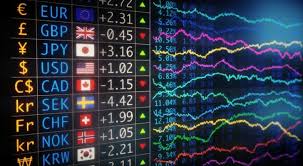The Ultimate Guide to Forex Trading Strategies and Tips 1697835782

Forex trading, also known as foreign exchange trading, is a decentralized global market where all the world’s currencies trade. A strong knowledge base is essential for traders to navigate this dynamic environment. In this guide, we will discuss key strategies, tools, and insights to help you become a successful forex trader. For those looking to start trading, consider selecting the right platform and broker, such as trading forex Trading Broker ID, which can provide you with significant resources and support.
Understanding Forex Trading
The forex market is one of the largest financial markets in the world, with daily trading volumes exceeding $6 trillion. This immense liquidity allows traders to buy and sell currencies easily. Forex trading operates 24 hours a day, five days a week, which means that traders can engage in trades at almost any time. The major participants in the forex market include banks, financial institutions, corporations, and individual retail traders.
Basic Terminology in Forex Trading
To navigate the forex market effectively, it’s essential to understand key terminology. Here are some fundamental terms:
- Currency Pairs: Currencies are traded in pairs, such as EUR/USD or GBP/JPY. The first currency in the pair is the base currency, while the second is the quote currency.
- Pips: A pip is the smallest price move that a given exchange rate can make. For most pairs, a pip is 0.0001.
- Leverage: This allows traders to control larger positions with a smaller amount of capital. While leverage can amplify gains, it also magnifies losses.
- Spread: The difference between the bid and ask price of a currency pair. Spreads can vary significantly among brokers.
Types of Analysis in Forex Trading
Successful traders use different types of analysis to make informed trading decisions. The primary types of analysis are:
1. Fundamental Analysis
This involves analyzing economic indicators, interest rates, and political stability to forecast currency movements. Key reports to consider include GDP growth rates, employment data, and inflation figures.
2. Technical Analysis
Technical analysis focuses on historical price movements and trading volumes. Traders use charts and technical indicators, such as moving averages, Relative Strength Index (RSI), and Fibonacci retracements, to identify trends and potential entry and exit points.
3. Sentiment Analysis
Market sentiment refers to the overall attitude of traders towards a particular currency or economic outlook. Tracking sentiment can provide insights into potential market movements.
Developing a Trading Strategy
A well-defined trading strategy is crucial for success in forex trading. Here are the key components of a successful trading strategy:
1. Set Clear Goals

Define your trading goals, financial targets, and risk tolerance. Setting specific, measurable, achievable, relevant, and time-bound (SMART) goals can help guide your trading.
2. Risk Management
Effective risk management minimizes potential losses. Determine how much capital you’re willing to risk on a single trade and use stop-loss orders to protect your account from significant losses.
3. Testing the Strategy
Before applying your strategy in the live market, test it using a demo account. This allows you to practice without risking real money and refine your approach.
Common Trading Techniques
Here are some popular trading techniques employed by forex traders:
1. Day Trading
Day traders open and close positions within the same trading day, aiming to capitalize on intraday price movements.
2. Swing Trading
Swing traders hold positions for several days or weeks, aiming to profit from price swings in the market.
3. Scalping
Scalpers make dozens or hundreds of trades in a single day, targeting small price movements to accumulate profits over time.
Choosing a Forex Broker
Selecting the right forex broker is critical to your trading success. Consider the following factors when evaluating a broker:
- Regulation: Ensure the broker is regulated by a reputable authority, which provides a level of security for your funds.
- Trading Platform: The trading platform should be user-friendly and equipped with the tools necessary for analysis and execution of trades.
- Fees and Spreads: Compare the broker’s fees, spreads, and commissions to ensure you’re getting a competitive rate.
- Customer Support: Good customer service can significantly enhance your trading experience in case you encounter issues.
Conclusion
Forex trading can be a rewarding yet challenging endeavor. Understanding the market, utilizing proper analysis, and developing a solid trading strategy are vital components of success. By continuously educating yourself and adapting to the market dynamics, you can improve your trading skills. Remember, patience and discipline are keys to long-term success in forex trading. Given the fast-paced nature of the forex market, consider leveraging the knowledge and resources provided by reputable brokers to enhance your trading journey.



